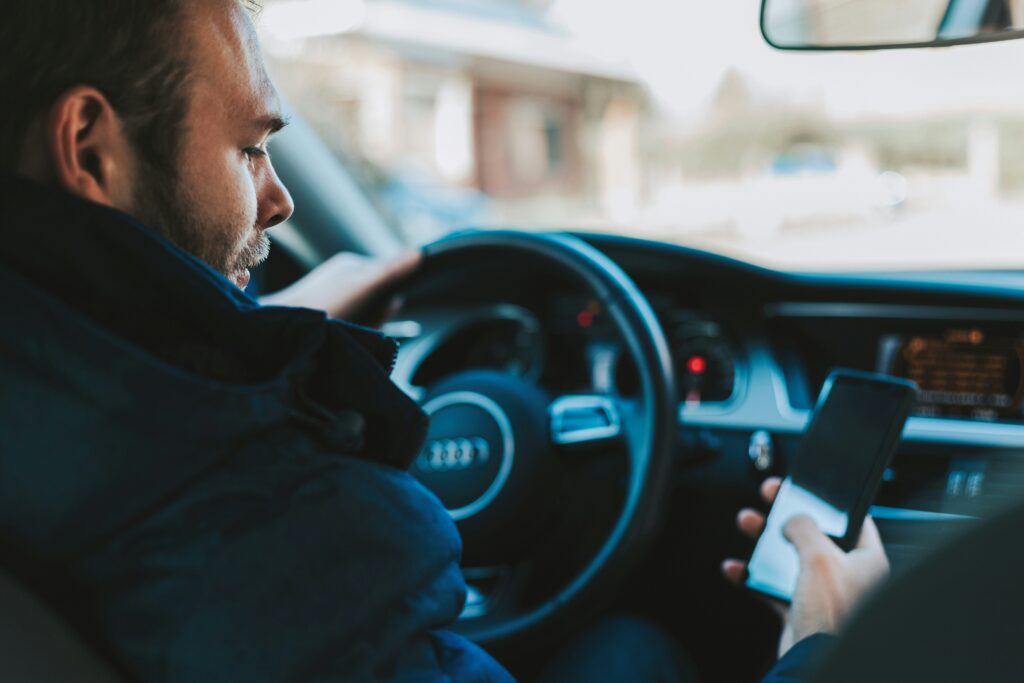While distracted and inattentive driving may appear similar, they have distinct meanings. Understanding the difference between these terms and how they affect driving safety is crucial in reducing the risk of car accidents.
This guide provides everything you need to know about distracted vs. inattentive driving, along with preventative strategies for keeping our roads safe. Should the worst happen, it also offers guidance on connecting with top personal injury attorneys in Los Angeles, CA, to protect your rights.
What Does Distracted Driving Mean?

Distracted driving occurs when a driver engages in activities that divert their attention away from the primary task of driving to unrelated tasks. In simple terms, distracted driving involves anything that takes your focus off the road. Common examples include:
- Texting
- Daydreaming
- Applying makeup
- Eating or drinking
- Searching for a destination on Maps
- Reaching for an item in the backseat
- Changing the music or adjusting the radio
According to the Centers for Disease Control and Prevention (CDC), distractions fall into three categories: visual (taking your eyes off the road), manual (taking your hands off the wheel), and cognitive (taking your mind off driving). These distractions can significantly increase the likelihood of an accident on the road.
What Does Inattentive Driving Mean?

Inattentive driving is a specific type of distracted driving characterized by cognitive distraction, meaning your mind and focus drift away from the road. Common examples include daydreaming or zoning. When you lack mental presence, you diminish your ability to react, which increases the risk of accidents.
Several factors can contribute to inattentive driving, such as:
- Fatigue
- Boredom
- Overthinking
- High stress
- Emotional distress
- Repetitive routes
What sets Inattentive driving apart from distracted driving is that it often happens unconsciously. Unlike manual or visual distracted driving, you may not even realize your mind has wandered until it is too late, making it especially dangerous.
Take Preventative Measures
Distracted or inattentive driving greatly increases the risk of car crashes, often with serious consequences. To minimize these risks, avoid multitasking and refrain from using your cell phone while driving. If you need to eat, send a text, or handle any other task, pull over safely and take a brief break.
Additionally, ensure you get enough sleep, especially before long road trips, and take regular breaks to stay alert. If needed, you can also increase your caffeine intake to maintain focus. If you are feeling particularly stressed or anxious, avoid driving if possible, or use relaxation techniques like deep breathing and mindfulness before getting behind the wheel to help calm your mind.
Passengers can also play a key role in preventing distractions by assisting the driver with tasks like navigation or adjusting controls. This will allow the driver to focus solely on the road. Staying 100% attentive is the best way to ensure safe driving.
Schedule a Free Consultation With a Personal Injury Lawyer in Los Angeles
By implementing the safety guidelines outlined in this guide, you can reduce the risk of a minor or severe car accident. If you do face a tragedy, our Los Angeles personal injury law firm and wrongful death firm will work directly with insurance companies to identify the best compensation for victims.
John J. Perlstein has over 25 years of experience securing fair and just outcomes in Los Angeles personal injury cases and wrongful death cases. He will ensure accurate compensation for victims or surviving family members and clearance for those wrongly accused. Call (213) 583-5786 or fill out the form for a free consultation with a Los Angeles injury attorney.
